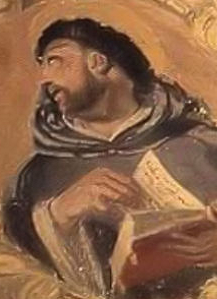William Arnaud [1] (died 28 May 1242) was a Dominican inquisitor and martyr.
William was a native of Montpellier. [2] In 1234, Pope Gregory IX named him inquisitor in the dioceses of Agen, Albi, Carcassonne and Toulouse. [3] He was also active with Pierre Seilan in the diocese of Cahors. [4] He was learned in canon law and gained a reputation for zealousness in his inquisitorial duties. He raised enough opposition that he was banished from Toulouse in October 1235 and only allowed back in March 1236 after papal intercession with the count. The Chronicle of Guillaume Pelhisson [ de ] is an important source for William's inquests, since Pelhisson had access to its now lost records. He appears to have been the most active inquisitor in the region in the 1230s.
On 28 May 1242, William and eleven others were massacred at Avignonet. [9] Their murder was arranged by the bailiff, Raymond of Alfaro, perhaps with the tacit agreement of Count Raymond VII of Toulouse. The murderers themselves came from the castle of Montségur. None of the murderers were ever punished. The Cathars celebrated William's death, even composing songs in Occitan about it, according to an inquisitorial deposition from 1244. [12] The Cathar leader Pierre-Roger de Mirepoix [ fr ] expressed a desire to drink wine from William's skull, had it not been crushed to pieces. The fictionalized but historically based account in the Novas de l'heretje is probably referring to William under the name "Huc Arnaut":
Per quels Prezicadors no se volon cessar,
Nil savis Huc Arnaut anc no s'i volc palpar,
Per que li fals heretje l'an fag lo cap trencar;
Fraire B. de Caus lo volc de recemblar. | These preachers do not wish to stop,
nor did the learned Huc Arnaut ever hold back,
which is why the false heretics have had him decapitated;
Friar Bernard de Caux wants to emulate him. |
| |
Catholics reported miracles following the deaths at Avignonet, but it was not until 6 September 1866 that they were beatified by Pope Pius IX. William is listed in the revised Roman Martyrology of 2004, but not in the General Roman Calendar .
Catharism was a Christian quasi-dualist or pseudo-Gnostic movement which thrived in Southern Europe, particularly in northern Italy and southern France, between the 12th and 14th centuries. Denounced as a heretical sect by the Catholic Church, its followers were attacked first by the Albigensian Crusade and later by the Medieval Inquisition, which eradicated the sect by 1350. Many thousands were slaughtered, hanged, or burnt at the stake, sometimes without regard for "age or sex."

The Inquisition was a judicial procedure and a group of institutions within the Catholic Church whose aim was to combat heresy, apostasy, blasphemy, witchcraft, and customs considered deviant. Violence, torture, or the simple threat of its application, were used by the Inquisition to extract confessions and denunciations from heretics. Studies of the records have found that the overwhelming majority of sentences consisted of penances, but convictions of unrepentant heresy were handed over to the secular courts, which generally resulted in execution or life imprisonment. The Inquisition had its start in the 12th-century Kingdom of France, with the aim of combating religious deviation, particularly among the Cathars and the Waldensians. The inquisitorial courts from this time until the mid-15th century are together known as the Medieval Inquisition. Other groups investigated during the Medieval Inquisition, which primarily took place in France and Italy, include the Spiritual Franciscans, the Hussites, and the Beguines. Beginning in the 1250s, inquisitors were generally chosen from members of the Dominican Order, replacing the earlier practice of using local clergy as judges.

Year 1242 (MCCXLII) was a common year starting on Wednesday of the Julian calendar.
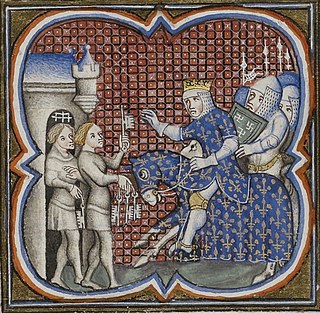
Louis VIII, nicknamed The Lion, was King of France from 1223 to 1226. As prince, he invaded England on 21 May 1216 and was excommunicated by a papal legate on 29 May 1216. On 2 June 1216, Louis was proclaimed "King of England" by rebellious barons in London, though never crowned. He soon seized half the English kingdom but was eventually defeated by the English and after the Treaty of Lambeth, was paid 10,000 marks, pledged never to invade England again, and was absolved of his excommunication.

The Albigensian Crusade or Cathar Crusade (1209–1229) was a military and ideological campaign initiated by Pope Innocent III to eliminate Catharism in Languedoc, what is now southern France. The Crusade was prosecuted primarily by the French crown and promptly took on a political aspect. It resulted in the significant reduction of practicing Cathars and a realignment of the County of Toulouse with the French crown. The distinct regional culture of Languedoc was also diminished.
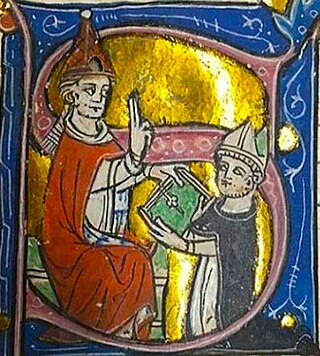
Bernard Gui, also known as Bernardo Gui or Bernardus Guidonis, was a Limousin Dominican friar, Bishop of Lodève, and a papal inquisitor during the later stages of the Medieval Inquisition.

The Château de Montségur is a former fortress near Montségur, a commune in the Ariège department in southern France. Its ruins are the site of a razed stronghold of the Cathars. The present fortress on the site, though described as one of the "Cathar castles," is actually of a later period. It has been listed as a monument historique by the French Ministry of Culture since 1862.

Raymond VII was Count of Toulouse, Duke of Narbonne and Marquis of Provence from 1222 until his death.
The White Brotherhood was an urban society of Toulouse established in 1211 during the episcopate of Folquet de Marselha, so-called from its members' habit of wearing white crosses on their chests. The society, called a "pious institution" by William of Puylaurens, was militant towards usurers (Jews) and Cathars, robbing them and destroying their homes. Most of the Whites came from the city proper. A Black Brotherhood, so-called in opposition to the White, was soon formed and the two factions went to war in the streets of Toulouse. According to Puylaurens:
Daily the two parties would clash, banners flying, bristling with weapons, even with cavalry in evidence. Through the agency of His servant the bishop, Our Lord came to bring them, not a bad peace but a good war.

Pierre de Castelnau, French ecclesiastic, made papal legate in 1199 to address the Cathar heresy, he was subsequently murdered in 1208. Following his death Pope Innocent III beatified him by papal order, excommunicated Count Raymond VI of Toulouse, and declared the Albigensian crusade.
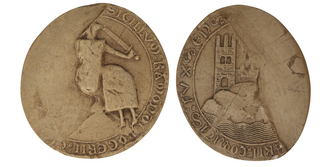
Raimond Roger was the sixth Count of Foix from the House of Foix. He was the son and successor of Roger Bernard I and his wife Cécilia Trencavel.
Raymond du Fauga was a French Dominican, and bishop of Toulouse from 1232 to 1270. He was a significant figure in the struggle in Languedoc between the Catholic Church and the Cathars.
Guilhabert de Castres was a prominent Cathar theologian. Born in Castres, he became a Cathar Perfect and, between 1223 and 1226, Bishop of Toulouse in the Cathar Church. In the theological debates in the early 13th century between the Cathars and the Papal representatives, he presented the Cathar arguments, including at the Debate at Montreal in 1206 and at the last Debate at Pamiers where he encountered Saint Dominic in 1207, prior to the Albigensian Crusades.

The Massacre at Béziers occurred on 22 July 1209 during the sack of Béziers by crusaders. It was the first major military action of the Albigensian Crusade.

The siege of Montségur was a siege that took place during the Albigensian Crusade. It pitted the royal forces of Louis IX of France and those of the bishops of Albi and Narbonne against the forces of Pierre Roger de Mirepoix, who protected a community of Cathars in Montségur.
"Caedite eos. Novit enim Dominus qui sunt eius." is a phrase reportedly spoken by the commander of the Albigensian Crusade, prior to the massacre at Béziers on 22 July 1209. A direct translation of the Medieval Latin phrase is "Kill them. The Lord knows those that are his own". Papal legate and Cistercian abbot Arnaud Amalric was the military commander of the Crusade in its initial phase and leader of this first major military action of the Crusade, the assault on Béziers, and was reported by Caesarius of Heisterbach to have uttered the order.
Bernard de Caux, or in Latin Bernardo or Bernardus de Caucio, was a Dominican friar and medieval inquisitor. His activities mainly took place in the region of the County of Toulouse between 1243 and 1249. He originated the investigation processes and his witness interrogations are recorded in a 13th-century transcribed manuscript preserved in the library of Toulouse.

The siege of Minerve was a military engagement which took place in June and July 1210 during the Albigensian Crusade in the town of Minerve in southern France. It was undertaken by the Catholic Crusaders against the Cathars in southern France, who were regarded as a heretical sect. The Crusaders, led by French nobleman Simon de Montfort, besieged and captured the town. The Crusaders allowed the soldiers defending the town, Catholics, and any Cathars who had not yet reached the status of perfect to go free. Three Cathar perfects who repented were pardoned, but 140 others who refused to do so were burnt at the stake.

The Avignonet massacre occurred on the eve of 28 May 1242 when a small force, mainly consisting of Cathars, massacred a group of inquisitors during the Albigensian Crusade.
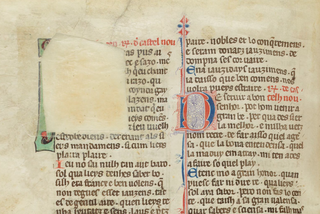
Raimon de Castelnou was an Occitan writer and troubadour of the second half of the 13th century. He wrote five cansos and one treatise on Catholic doctrine and ethics. There is a sirventes attributed to him in some manuscripts, but its attribution is disputed.
